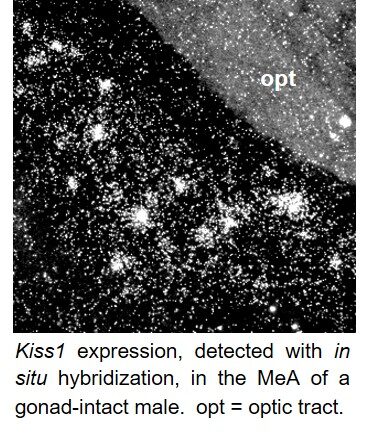Shannon Stephens, PhD
Areas of Study
Reproductive regulation
Education
- Emory University2013PhD
- Emory University2008MA
- Franklin & Marshall College2003BA
Research
Over 10% of women in the U.S. have impaired fecundity, but the causes of these fertility issues are multi-faceted and remain poorly understood. Using transgenic mouse models, my research broadly focuses on how the brain controls reproduction and how this reproductive regulation may differ between females and males. My current research examines: 1) the regulation and potential reproductive functions of Kiss1 neurons outside of the hypothalamus (such as in the amygdala, bed nucleus of the stria terminalis, and/or lateral septum); and 2) how the amygdala, a brain region known to regulate social behavior, stress, and emotions, influences reproduction and fertility. Our research utilizes a variety of approaches, including molecular biology (PCR, qPCR, immunoprecipitation, RNA sequencing, in situ hybridization), genetics (primarily using transgenic mouse models), immunohistochemistry, targeted stereotaxic injections, neuronal tract tracing, microscopy, and in vivo behavioral and fertility assessments. In addition to providing a better understanding of how the brain regulates reproduction, our research may provide potential therapeutic targets for infertility and impaired fecundity.
The Regulation and Function of Kiss1 in the medial amygdala, BnST, and lateral septum
Kisspeptin, a peptide encoded by the Kiss1 gene, is required for reproduction. Mice and humans lacking Kiss1 or its receptor, Kiss1r, have severe deficits in puberty, fertility, and reproductive hormone release. Most research has focused on the reproductive role of Kiss1/kisspeptin in the hypothalamus, with little focus on the regulation and function of Kiss1 expression outside of the hypothalamus. The medial amygdala (MeA), the bed nucleus of the stria terminalis (BnST), and the lateral septum (LS) are all brain regions outside the hypothalamus implicated in regulating reproductive physiology and/or sexual behavior. My postdoctoral F32 and K99 research, as well as my current R00 research, examines the regulation and function of extra hypothalamic Kiss1 expression in the MeA, BnST, and LS to determine if Kiss1/kisspeptin neurons are one potential mechanism by which these brain regions modulate reproduction.

The Role of the Amygdala in Modulating Adult Fertility and Puberty Onset
The amygdala is a brain region comprised of multiple discrete nuclei, one of which is the medial amygdala (MeA). The MeA has numerous behavioral and physiological functions, including effects on puberty onset, as well as reproductive physiology and behavior. However, the molecular and cellular mechanisms within the MeA that regulate reproductive physiology and behavior remain unknown. Our research also examines specific genetic and neural mechanisms, including but not limited to Kiss1/kisspeptin neurons, in the MeA to better understand how the MeA influences both adult reproduction and puberty onset.
Publications
View Shannon Stephens's articles on the National Institute of Health's PubMed website.